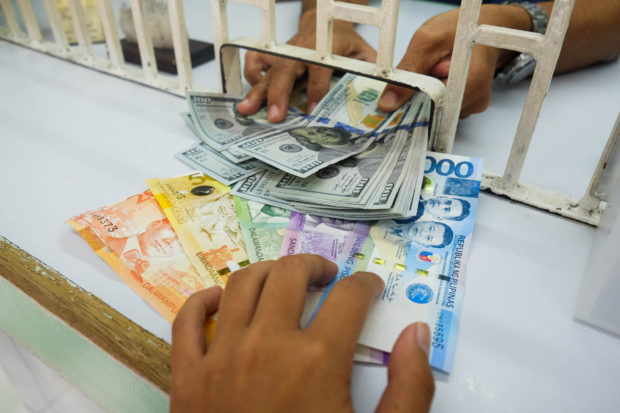Personal remittances from Overseas Filipino Workers reached $3.02 billion in August, up by 4.4 percent from $2.89 billion in the same month of 2021, helping dampen the downward momentum of the Philippine peso against the US dollar.
This brought the January-August tally of personal remittances, which include noncash items as well as cash that were transferred through nonbank channels, to $23.34 billion, an increase of 3 percent from $22.67 billion in the same period last year.
Such inflows, along with other big dollar earners like the tourism and business process outsourcing industries, help shore up the country’s foreign currency reserves to pay for the country’s rising import bill.
Cash remittances that were sent through banks alone increased by 4.3 percent to $2.72 billion in August from $2.61 billion in the same month of 2021. Inflows in August brought the eight-month total starting January to $20.99 billion, up 3 percent from $20.38 billion in the same period last year.
The Bangko Sentral ng Pilipinas (BSP) said fund transfers from banks in the United States, Saudi Arabia, Singapore and Qatar contributed the most to the increase in remittances in the eight months up to August.
In August alone, cash sent by land-based OFWs reached $2.13 billion or 4.7 percent higher than the $2.03 billion a year ago.
Also, transfer from sea-based OFWs increased by 3.1 percent to $650 million from $630 million.
Lowest in three months
Michael Ricafort, chief economist at Rizal Commercial Banking Corp., said the numbers for August brought cash remittances to the lowest amount in three months or since $2.42 billion last May. The level in August also meant a 6.7-percent decrease compared to $2.92 billion in July.
Even then, cash remittances in August were “still near the record high of $2.987 billion posted in December 2021 … and still considered a bright spot for the Philippine economy, especially on consumer spending, which accounts for at least 68 percent of the economy,” Ricafort said.
He said the “modest single-digit growth” in cash remittances in recent months may be partly attributed to high inflation rates in the United States and the rest of the world, as well as higher interest rates in recent months.
Global economy
“These factors slowed down the recovery in the global economy and in both OFW employment and incomes,” he added.
Ricafort also said that another contributor to lesser inflows in August, compared to previous months, was the depreciation of the peso against the US dollar.
The economist noted that the peso-dollar exchange rate reached new “highs” since breaching 56.45:$1 in July and most recently 59:$1, while coming from 51:$1 at the start of this year.
Ricafort said the rapid depreciation of the peso fundamentally increased the peso equivalent of OFW remittances —less US dollars were needed to raise the same value in pesos being sent to recipients in the Philippines.
“However, whatever gains OFWs and their dependents may have due to more peso proceeds for their foreign currencies may be offset by higher prices [of goods and services],” Ricafort said, adding that inflation was currently at a new four-year high at 6.9 percent as recorded in September.
This means that higher prices would also prompt OFWs to send more dollars to their dependents.
“For the coming months, OFW remittances and conversion to pesos are expected to seasonally increase in the fourth quarter in preparation for the holiday season and spending, a consistent pattern seen for many decades,” Ricafort said.
The BSP expects the growth in personal remittances to stabilize at 4 percent in 2022 and in 2023 following a 5.1-percent rise to a full-year record high of $34.88 billion in 2021 and an 0.8-percent contraction in 2020. INQ
